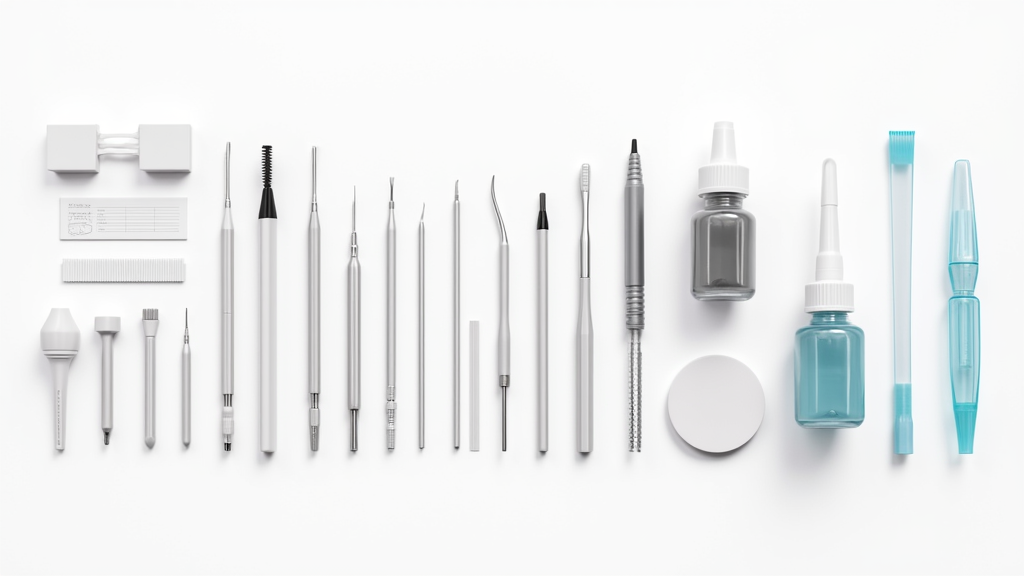Not everyone has naturally full eyebrows. Some struggle with eyebrows that no
longer have a shape and have usually tried all methods to fill them in. But what if
nothing works anymore? Microblading is a semi-permanent makeup technique,
intended for people who want long-lasting results for fuller and more natural eyebrows
without turning them into a real tattoo. However, the treatment is not painless.
With the help of a kind of pen with fine needles, small scratches are carved into
the skin and then filled with colored pigment. I recommend that you definitely weigh the pros
and cons against each other before making a final decision, and I also recommend this long-lasting look because it save time on your daily makeup.

Essential Tools and Equipment for Microblading
A good and reliable microblading expert has a diploma as a beautician and a full-fledged certified training in microblading. The procedure must be carried out in a sterile, clean and well-equipped environment and obtain the certificate “Hygiene procedures for tattoos and piercings. is mandatory to minimize infection risks. The instruments consist of a microblading pen with disposable blades, a selection of high-quality color pigments and disinfectant material. Professionals emphasize the importance of using certified products that meet high safety standards before, during, and after treatment. A microblading expert relies on the use of instruments, equipment, and a professional workplace for a safe treatment result.
Among the essential instruments included in a microblading kit are:
- Microblading Pen: A pen with interchangeable needles to carve fine lines into the epidermis that resemble natural hairs.
- Sterile needles: Single-use or re-sterilized disposable blades ensure a clean and safe environment for each customer.
- High-quality color pigments: Specially formulated pigments are safe for facial skin and are designed to gradually fade over time.
- Aftercare supplies: Products such as healing balms and gentle cleansers support the healing process and help maintain pigment integrity.
The procedure has evolved over the years, integrating advances in sanitation and pigment quality. Its growing success is partly due to the careful planning that goes into each session. Practitioners assess your skin type, eyebrow shape, and desired look before beginning the treatment.
The Microblading Process Explained
An initial consultation and intake interview with your chosen microblading expert is necessary to make a good diagnosis. Are you going for a natural or bold eyebrow shape? Your brow specialist will listen carefully to your expectations and provide you with all the necessary information about the treatment before, during and after as well as the possible risks and sensitivity problems on the skin. All of these pre-discussed steps will help clients feel comfortable and confident before the microblading process begins.
After the microblading expert understands what you want, she will explain the procedure step by step. Once these points have been discussed, you will fill in and sign a consent form/questionnaire so that the pre-treatment of the intervention can begin.
- Consultation: Customer file on the basis of a skin analysis and analysis of morphology face and colour typology, we determine the shape and colour choice of the eyebrow.
- Patch Test: A patch test is recommended to check for any allergic reactions to the pigment. This precautionary step is essential for avoiding unwanted skin irritations.
- Brow Mapping: The eyebrows are measured and drawn with an eyebrow pencil and upon approval, we apply an anesthetic cream so that the pain during the treatment feels less unpleasant.
- Session: The microblading expert starts the treatment with the microblading pen after the color pigment has been determined. This session lasts approximately 2 hours.
- Understanding aftercare: Some redness and small scabs are normal and generally take about a week for the skin to recover. Avoid contact with water (showering, swimming) for 7-10 days. It is also usually advised to avoid exposure to sunlight and to refrain from other cosmetic treatments in the area for 1 month to achieve proper healing.
Many beginners find that researching the available tools and understanding their functions builds confidence in the process. A well-prepared client often experiences a smoother procedure and ends up with a naturally stepped-up look.
In summery
The process requires both technical skill and creative and artistic vision. Your descision to invest in microblading should be made after understanding the tools, techniques, and detailed care required. Open discussions during consultations, combined with comprehensive aftercare instructions, play a major role in overall satisfaction with the results. I encourage anyone interested in this treatment to ask questions and educate themselves thoroughly. It is very important to ensure that every step—from initial consultation to aftercare—is fully understood by the client prior to the session. With continued advancements and a focus on safety, the future of microblading looks bright for anyone looking to invest in their aesthetic self-care. This expanded perspective on microblading shows that the treatment is not just about looking good; it is about achieving a balanced, natural enhancement that seamlessly fits into your lifestyle. Appreciating the artistry behind each stroke adds depth to the experience, leaving each client feeling both satisfied and understood. Ultimately, the journey to microblading is one that combines technique with innovation, making it a worthwhile investment for perfectly designed eyebrows.
Frequently Asked Questions
What is the cost of such a treatment?
Answer: The cost of microblading treatment can vary depending on the location
and experience of the specialist. On average, microblading costs
between €250 and €500.
What exactly is microblading and how does it work?
Answer: Microblading is a semi-permanent makeup technique where pigment is manually deposited into the skin using a tool with fine needles. The strokes created mimic natural eyebrow hairs, resulting in a look that appears organically fuller and better defined.
How long does the procedure take and what is the recovery like?
Answer: The procedure usually takes about two hours, including consultations, design adjustments, and the microblading process. Recovery typically involves mild redness and gradual settling of the pigment over the course of a week, with specific recommendations for aftercare provided by the technician.
Are there risks associated with microblading?
Answer: As with any cosmetic procedure, there are potential risks, which may include allergic reactions to pigments, minor infections, or undesired aesthetic outcomes if the work is not performed by an experienced technician. It is very important to choose a qualified professional and follow aftercare instructions carefully.
How do I find a microblading expert?
Answer: Research the technician’s qualifications: Checking the brow specialist’s credentials and portfolio plays an important role in achieving the best results.
How often should touch-up sessions be scheduled?
Answer: Touch-up sessions are generally recommended every one to two years, depending on skin type and lifestyle. The frequency can vary with factors such as sun exposure and the natural rate of skin regeneration.
What should I do if I experience unusual after-effects?
Answer: In case of prolonged redness, irritation, or signs of infection, it is crucial to consult with your technician or seek advice from a medical professional immediately. Following these guidelines ensures that your skin receives the proper care.
How long do the results last?
Answer: Knowing how long the results last will help plan future maintenance sessions and follow-up treatments to maintain the desired outcome.Conclusion
In Summery
Would you like more information about this technique such as how to find a certified microblading expert, choosing the right brow color pigment or understanding the requirements for microblading?
I hope that you will find what you search on this website and if not, you can always leave your question or comment.

Kind regards,
Christiane